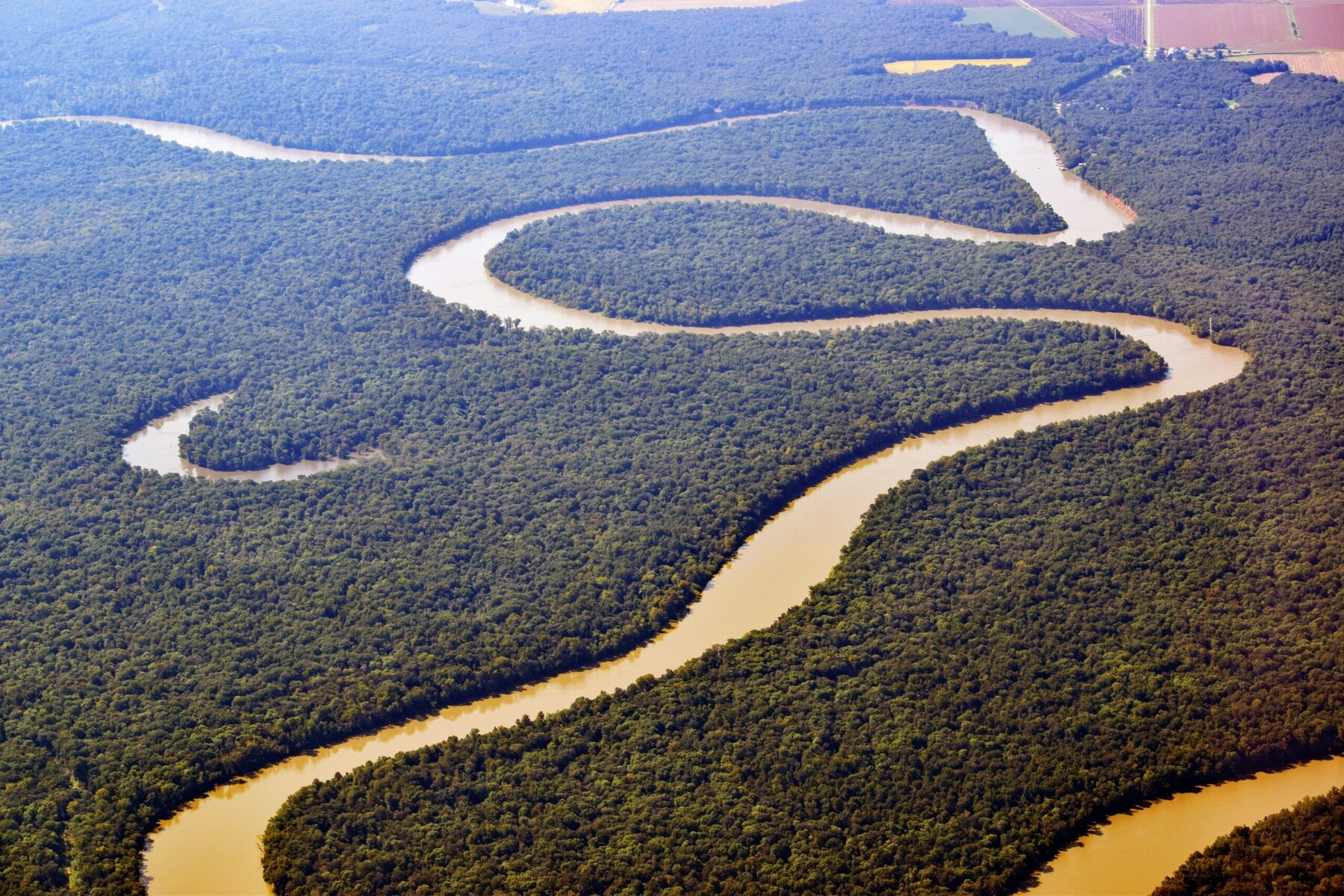
The Fundamental Power of The Mississippi River




This story is one in a series about the confluence of capitalism, conservation and cultural identity in the Mississippi River Basin. It is part of Waterline and is sponsored by the Walton Family Foundation.
Ten years ago, I climbed into a canoe and paddled onto the Mississippi River. This was a magazine assignment, one of the first big adventures in my then-new career as a freelance journalist. The story was simple; I was meant to profile a river guide who took tourists out on the nation’s mightiest river. Part of my curiosity was why anyone might do so. I assumed that the Mississippi was a dead river, just one big canal for the towboats.
I was so shocked by how wrong I was — by the incredible beauty I found out there — that I spent the next decade traveling the Mississippi.
At first, I was just chasing the pleasure of being able to pitch a tent on a beautiful sandbar in a landscape that felt so separate from the modern world. Eventually, though, all that wandering turned into reading and interviews, and then my first book, a popular history of the Mississippi. I still think of myself as a clueless guy who once upon a time launched a little vessel onto a big river, but now I’m often asked to speak about the Mississippi — its past and its future.
Over the past two centuries, the Mississippi has been heavily altered. Thousands of miles of concrete line its banks, preventing erosion. Levees prevent the water from reaching the river’s life-giving floodplain. Locks and dams chop a flowing body into a series of stagnant lakes. The transformation of this river helped create the modern United States of America: It pushed us first toward what settlers called the “frontier,” and then into our status as world-shaping economic supergiant. But it’s become clear that the engineers did not fully understand what they were doing.


They thought they did, of course. My book features a series of men who claim to have enumerated “every important fact connected with the various physical conditions of the river and the laws uniting them,” to quote Andrew Humphreys, who in the mid-nineteenth century led the U.S. Army Corps of Engineers’ first major study of the Mississippi. Humphreys decided all his calculations made him qualified to solve the problem of flooding. As it turned out, the program Humphreys pursued led to a disastrous flood in 1927 that killed perhaps a thousand people and left hundreds of thousands stranded in fetid refugee camps.
Humphreys’ quote captures a common view, here in America, of the strange swirl of life that’s been labeled “nature” – it’s just a big set of particles and processes which, once studied and measured, can be reworked into a design of our choosing. My time on the Mississippi, though, has convinced me of something different. This river has a vital essence, a will and desires and needs. In the same way that you can never fully understand the inner workings of another human mind, we will never fully grasp this river.
There’s another way to put this: The Mississippi River is alive. Perhaps we will design better engineering — and have a brighter future here along this river — if we acknowledge its existence as a living, willful being.
Weighed down by negative news?
Our smart, bright, weekly newsletter is the uplift you’ve been looking for.
When I give talks about the river, I try to be cautious about this idea. I don’t want to get too far out in front of my audience, entering some spiritual plane where others can’t follow. But a few months ago, I got a heartening text from my mother. “New book out,” she said. The message was accompanied by a photo of a book jacket that featured a swirl of blue and green lines, a mess of meandering rivers that looped through the letters that spelled out the book’s title: Is A River Alive?
The book, written by the acclaimed British nature writer Robert Macfarlane, suggests an affirmative answer to that titular question. Macfarlane explores the idea that this fact of aliveness might suggest that rivers deserve legal rights, too. That proposal draws on ancient concepts, Indigenous wisdom in particular, which have been squeezed (not always comfortably) into our modern legal structures. I knew Macfarlane’s book was coming and I wondered if the idea of a river’s consciousness might suddenly reach wider circulation. The fact that my mother and her 70-something-year-old friends in suburban Connecticut were discussing the idea in their book club revealed that, yes, maybe it would. New language is entering the conversation about rivers — and with it, perhaps, new possibilities for how we might relate to them.
But what does that mean for the Mississippi?
The swirls on Macfarlane’s book cover are inspired by the river, and by a particular set of maps that, as Macfarlane puts it, depict the river’s “memories” — the paths that it has determinedly carved through the American landscape over the past few thousand years. Otherwise, though, North America’s biggest river does not figure in his narrative.


As I’ve contemplated why that might be, I’ve found myself thinking about language. How we talk about a river shapes how we see it, and thus how we treat it. There are common metaphors that suggest a general intuition of the Mississippi’s living essence: “Father of Waters,” some people call this waterway. Others prefer “Ol’ Man River.” Even the Corps of Engineers, which has overseen most of the river’s renovations, has historically referred to the river as an “enemy”, a word that justified a century of aggressive engineering designed to defeat and control. Now, I worry that the romantic old names are seen as just that — old.
“Before landscapes die, they vanish in the imagination,” Macfarlane writes in his book, quoting the Indian historian Bhavani Raman. That’s an ominous notion for the Mississippi. Hidden behind the levees especially, it’s mostly unseen, and that allows many Americans to presume what I once did: That the Mississippi River is dead already.
Picture an archetypal American “river” and you’re likely to conjure a rippling trout stream in the Rocky Mountains, somewhere beautiful and wild, like the narrow beginnings of the Colorado River in Rocky Mountain National Park. Big rivers — the Ohio, the Missouri, and most of all the Mississippi, especially in the South, where its bigness swells to overwhelming proportions — tend to exist in our minds more as infrastructure than as nature. That’s why in my talks, I sometimes offer a harebrained idea. Geologists call the massive, swampy river that flows a thousand miles south from Illinois to the Gulf the Lower Mississippi; what if it was showcased in a Lower Mississippi River National Park? How might that help us begin to imagine this river anew?
Historians and journalists have done important work lately discussing the shortcomings of our national park system. They’re built, for example, on land stolen from Indigenous people, people whose wisdom white writers like Macfarlane and I are circling back to. Since they’re regarded as sanctuaries, set aside from the workaday world, their existence suggests that good nature is a place to take a vacation, rather than a thing that should be wound through our humdrum, daily lives. Still, I can’t help but notice the way that label, “national park,” all but sanctifies a place. Beauty — which is so often the metric by which the parks are chosen — is hard to measure by the engineers, which is at least a first step toward recognizing that there’s more to this river, and more to all of the swirl of life around us, than economic and material use.
I’m not sure my dream of a river park will ever happen, but I’m heartened every time I meet someone else who, like me, has stumbled onto the beauty of our big rivers. There’s been progress on every big branch of this watershed. Thanks to the work of Ohio River Way, in 2023 the Department of the Interior established a National Water Trail along the Ohio River, for example. That same year, Kentucky and Ohio created new authorities focused on river recreation. The Missouri River, home to the MR340 — one of the world’s longest continuous river races — has become something of a mecca for adventurers.
On the Mississippi, meanwhile, the Quapaw Canoe Company — the same outfit that first took me out ten years ago — persists with three outposts, alongside a number of other guiding companies. In Minneapolis, there are discussions underway about removing some dams, opening the opportunity for whitewater recreation on the river. What’s most exciting about that discussion, though, is the intentional and careful inclusion of the Dakota people, for whom the river has always been sacred.
A few weeks ago, I was asked to join a group of experts on PBS News Hour to discuss the Mississippi and its future. After my segment wrapped, I stuck around; the next guest was the major general who oversees the Army’s work on the Mississippi River, and I wanted to hear what she had to say. I did not agree with everything — she praised the current system of engineering in terms that seemed, to me, a bit too optimistic. But I was floored to hear one passing comment: “The river is alive,” she said. Not long ago, such words from a Corps official would have been unthinkable. Perhaps it’s just a talking point, a nod to the emerging zeitgeist, but it gave me hope that in our collective imagination, something is beginning to change.






